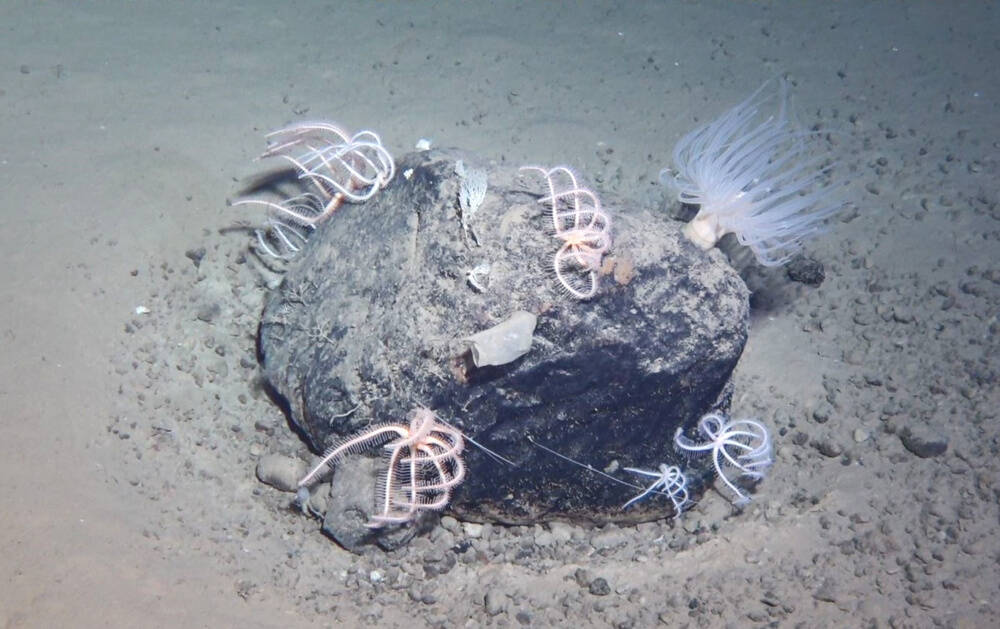Unveiling the mysteries of the Kermadec Trench
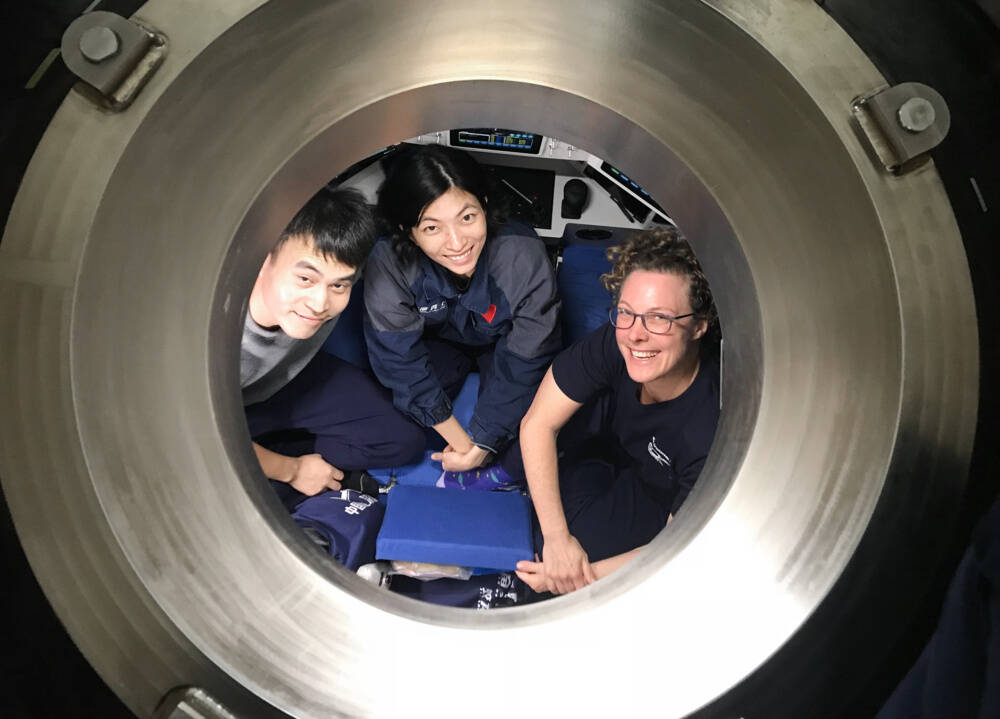
First women to dive to Scholl Deep
In late October 2022 scientists from China and New Zealand left Auckland, to use, for the first time, the full-ocean-depth Human Occupied Vehicle (HOV) Fendouzhe to systematically explore the Kermadec Trench, 10 km below sea level.
On November 4th, a first dive to the Scholl Deep was undertaken by Dr Kareen Schnabel from the New Zealand National Institute of Water & Atmospheric Research (NIWA) and two submersible pilots (Ms Yuqing Deng and Mr Xin Yuan) from the Institute of Deep-Sea Science and Engineering (IDSSE), who spent six hours exploring the Scholl Deep and the adjacent western slope of the trench. This was the first time a female scientist had reached the deepest point of this trench.
Scholl Deep is the deepest known point of the Kermadec Trench, which lies to the north of New Zealand. The trench is over 1000 km long, is almost perfectly straight, and its deepest point is at a depth greater than the height of Mt Everest.
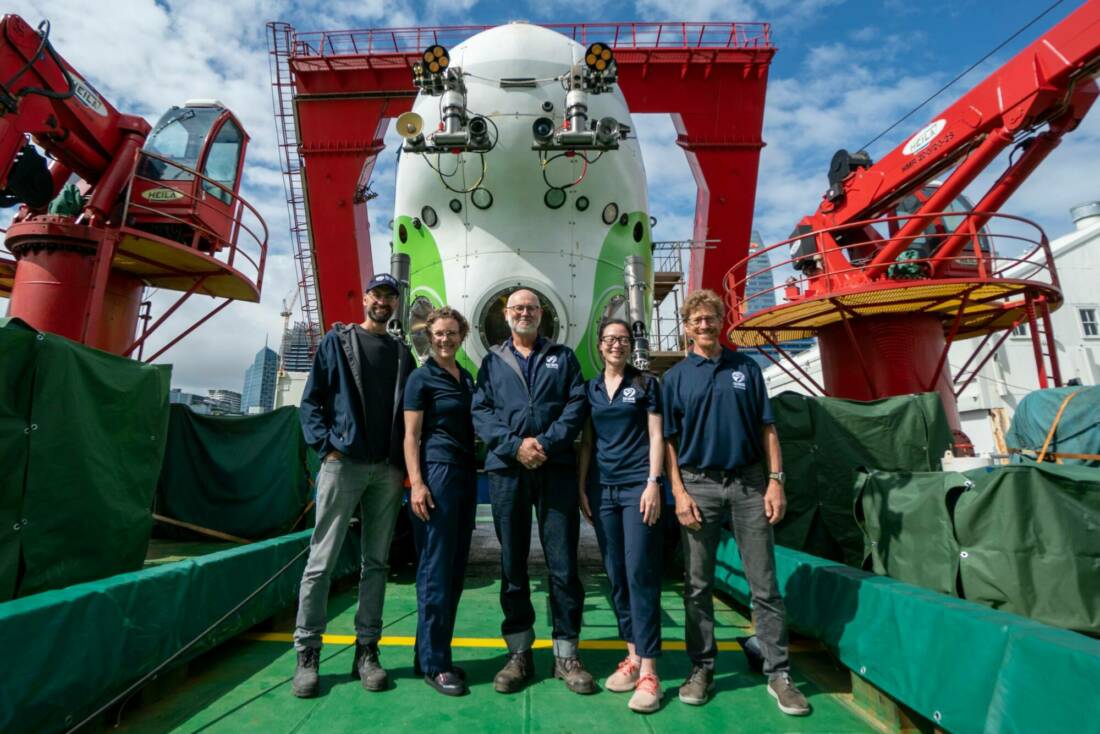
Extraordinary submersible technology
Using the HOV Fendouzhe, scientists collected deep-sea water samples, sediments, rocks, biological samples, and environmental data.
“This extraordinary submersible technology has given us the privilege of studying parts of the ocean in ways that we aren’t usually able to, giving New Zealand researchers a rare chance to explore this fascinating and fragile environment," says Dr Schnabel.
“Textbooks and images don’t compare to experiencing the light disappearing as you leave the surface of the ocean or seeing the deep sea floor with your own eyes. The fine sediments were covered in tracks, and we saw lots of small animals on the sea floor and in the water. It was jarring that there was still rubbish such as fishing floats and nets, even though we were more than 10,000 m below sea level.”
The first leg of the voyage was successfully completed on 24 November 2022. The HOV Fendouzhe undertook 16 dives between 5,747 m and 10,000 m depth, in addition to the deployment of other independent samplers such as a lander, CTD (water sampler), and a gravity corer. Another 15 dives were completed during the second leg of the voyage in December 2022 and included scientists from NIWA, IDSSE, Shanghai Jiaotong University, Tongji University, Zhejiang University, Hainan Tropical Ocean University and BGI-Qingdao.
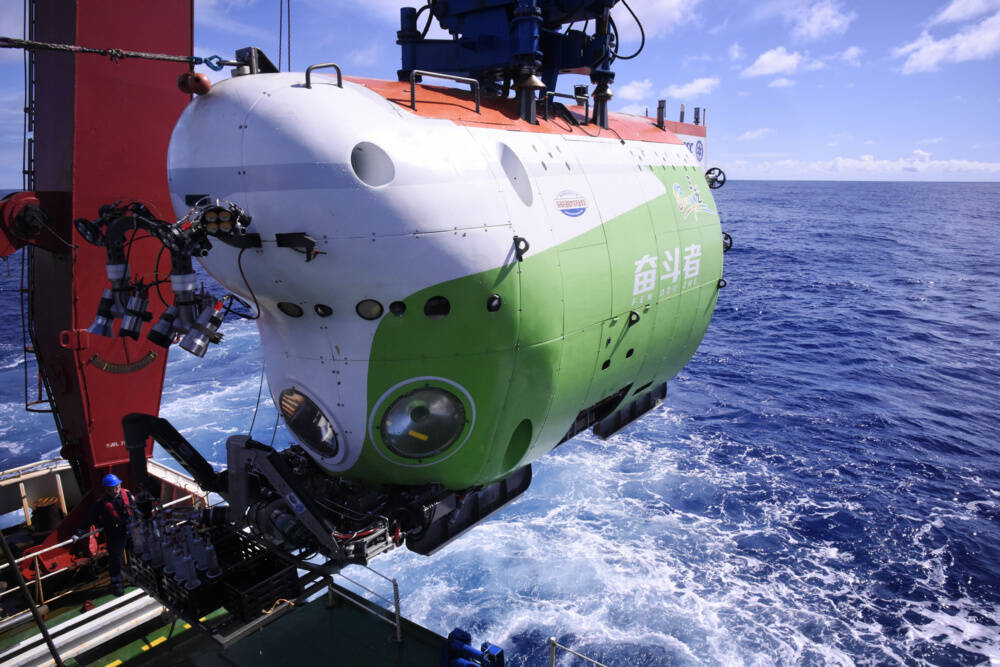
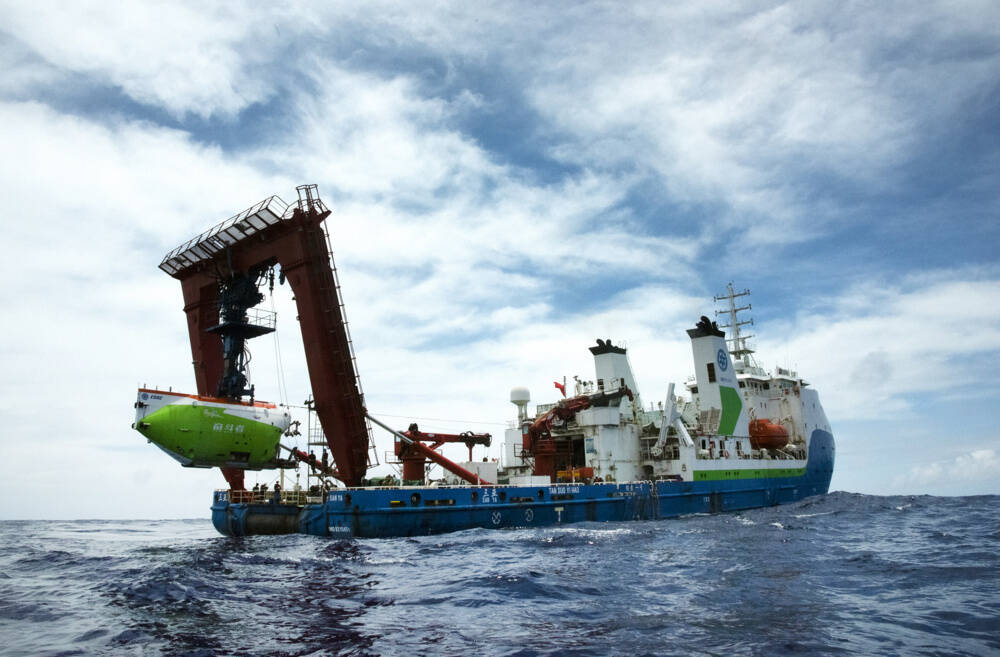
Fascinating findings
“It is really exciting for both Chinese and New Zealand scientists to have the opportunity to comprehensively appreciate the complexity and diversity of both the geo- and ecosystem of the Kermadec Trench,” says Dr PENG Xiaotong, the IDSSE voyage leader.
“Taking rock samples, for example, offers us a unique chance to understand the nature of the subducting and overriding plate, as well as the mechanism of the subduction initiation in Kermadec Trench,” says Dr PENG.
“A number of the animals have been tentatively identified and are either presumed new to science or have not been seen or collected since the first sampling voyage by the Danish research vessel Galathea in the 1950s.” says Dr Schnabel.
NIWA scientist Dr Daniel Leduc, who dove in the submersible in the north of the trench at 9,110 m, says the samples obtained represent a step-change in our understanding of the biodiversity of New Zealand’s deepest marine environment.
“We saw highly diverse seafloor communities even at great depths and discovered strange and rarely seen organisms such as the upside-down angler fish. As we go deeper into the trench, seafloor ecosystems become dominated by small organisms, which will need to be examined using light and electron microscopy back on land. I expect we will find many new species”.
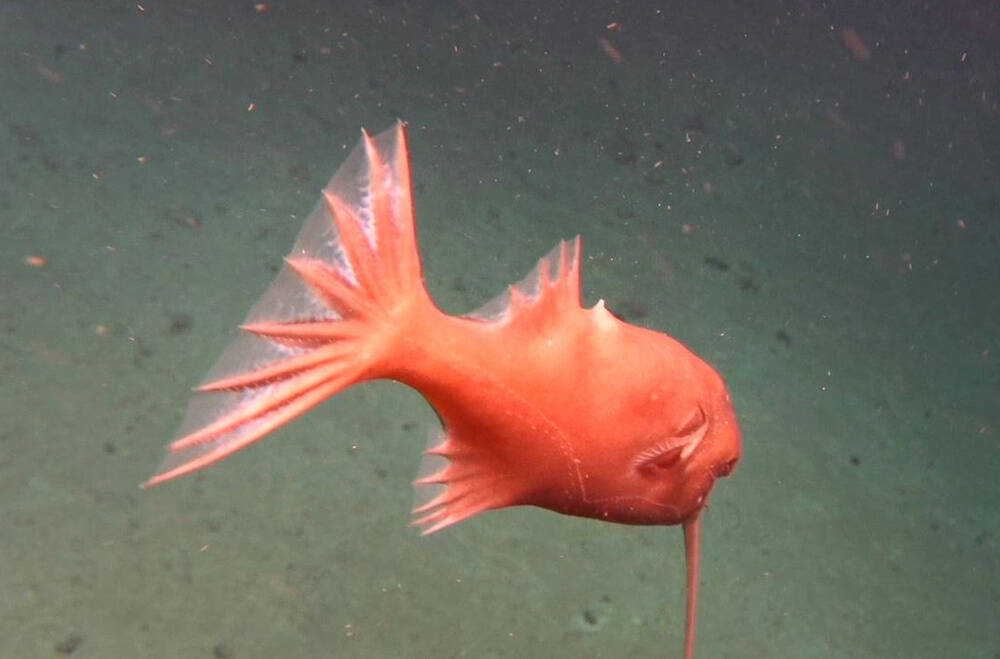
The hadal zone
The hadal zone is defined by water depths ranging between 6,000 and 11,000 m and remains one of the least investigated and most enigmatic habitats on our planet. The five deepest hadal trenches on Earth are distributed exclusively along the Ring of Fire of the western Pacific Ocean. Among them, the Kermadec Trench, in the southwest Pacific Ocean, stretches in a near straight line over about 1,200 km from the Louisville Seamount Chain in the north to the Hikurangi Plateau in the south.
The maximum depth recorded at the deepest point of the Kermadec Trench is 10,010 meters, making it the fourth-deepest ocean trench in the world. Together with the Tonga Trench to the north, it constitutes the 2,000 km-long Kermadec-Tonga subduction system, where strong earthquakes and volcanic eruptions are common.
“It was fascinating to actually observe the tiny sea cucumbers at the bottom of the Kermadec Trench, which are three times smaller in size than those we have observed previously in the Mariana Trench. These sorts of differences between trenches show that mysteries remain as to how animals are adapted to live in extremely deep environments,” says Dr ZHANG Haibin, a IDSSE marine biologist.
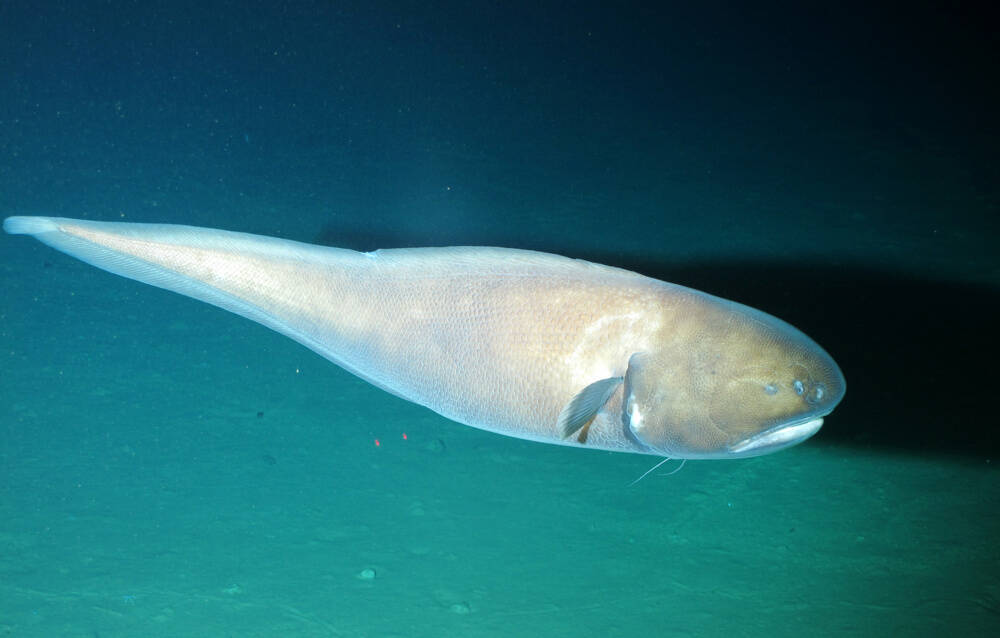
Diverse benthic fauna and complex habitats
The wide spatial coverage of the samples and data obtained by HOV Fendouzhe on this voyage offer an unprecedented opportunity to comprehensively investigate the diversity, abundance and ecology of the hadal seafloor communities, and distributional patterns related to the geomorphology in the Kermadec Trench. Preliminary observations show that benthic fauna, including holothurians, anemones, sea stars, brittle stars, sea lilies, hydroids, polychaetes, amphipods, shrimps, sponges, acorn worms and fishes exhibit high diversity at hadal depths. Some of the species are thought to be new to science.
Dives on the overriding plate and descending plate reveal a diversity of habitats for benthic fauna in the Kermadec Trench, which could be caused by turbidity current transportation, alteration of basement rocks, volcanism, fracture zones associated with large faults and sedimentary basins along the trench axis. Stalked anemones that grow on hard substrates, together with tiny deposit-feeding sea cucumbers and polychaetes, dominate the benthic community at a depth of 8,500-10,000 m.
These preliminary findings significantly add to our limited understanding of the faunal diversity in the deepest parts of the hadal environment. Another striking observation is that animals at the bottom of trench axis are much smaller than those found in the Mariana Trench. The reasons for this difference are still remain unclear, but are probably related to the food supply, the influence of turbidity current, sediment deposition or biological adaption to hadal depths.
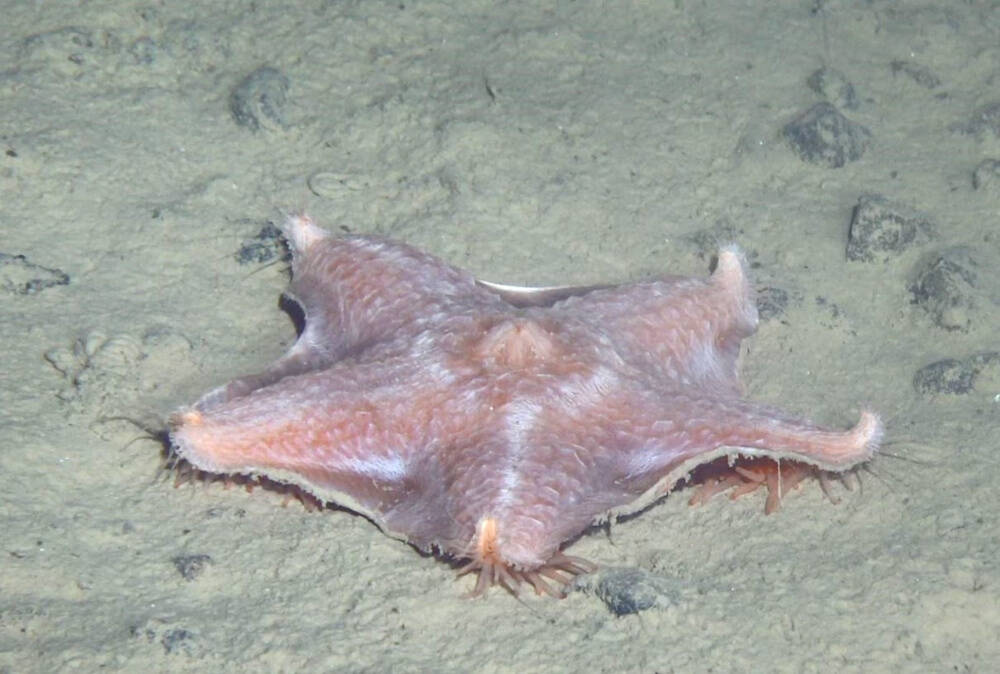
Global-TREnD Program
This expedition is the first of many planned missions that will be conducted as part of the Global Trench Exploration and Diving (Global-TREnD) program, which aims to advance humanity’s understanding of the least understood hadal geosystems and ecosystems through systematic exploration of hadal trenches worldwide, and to answer the foremost questions regarding trench life, geological processes and the relationship between them.
The team's next mission in the early 2023 is to conduct the first crewed dives into the Diamantina Trench in the Southeastern Indian Ocean, as well as an attempt to make the first crewed dives into the Wallaby-Zenith fracture zone in the Eastern Indian Ocean. No human being has ever visited the deepest parts of these hadal zones.
IDSSE and NIWA will continue their collaboration following the voyage to analyse the large number of samples obtained to give a better understanding of New Zealand’s deepest environment, and the impacts that humans may have on it.
